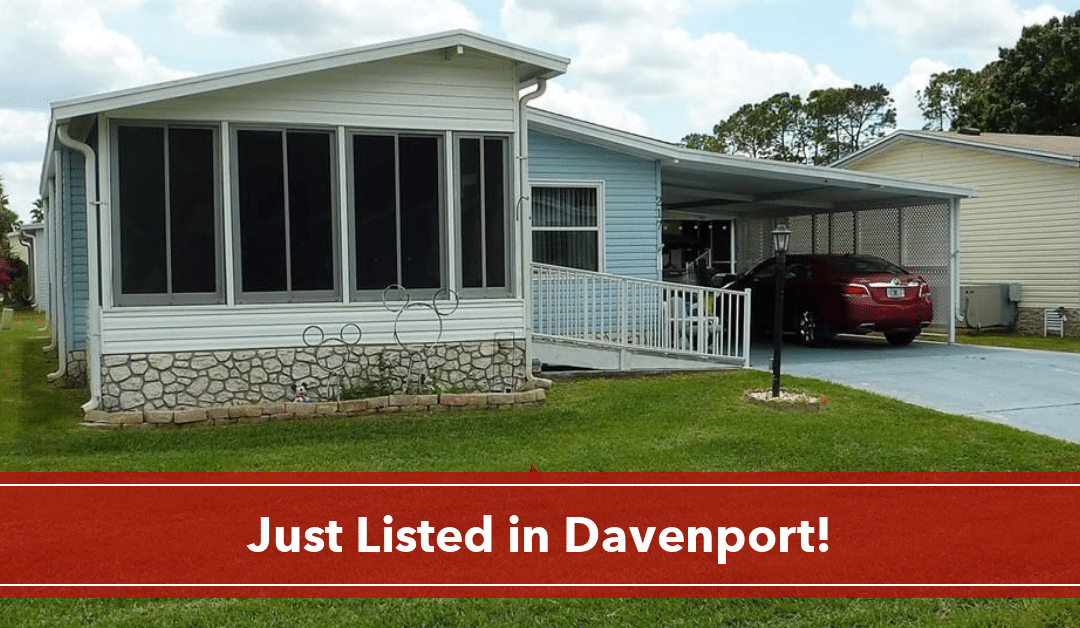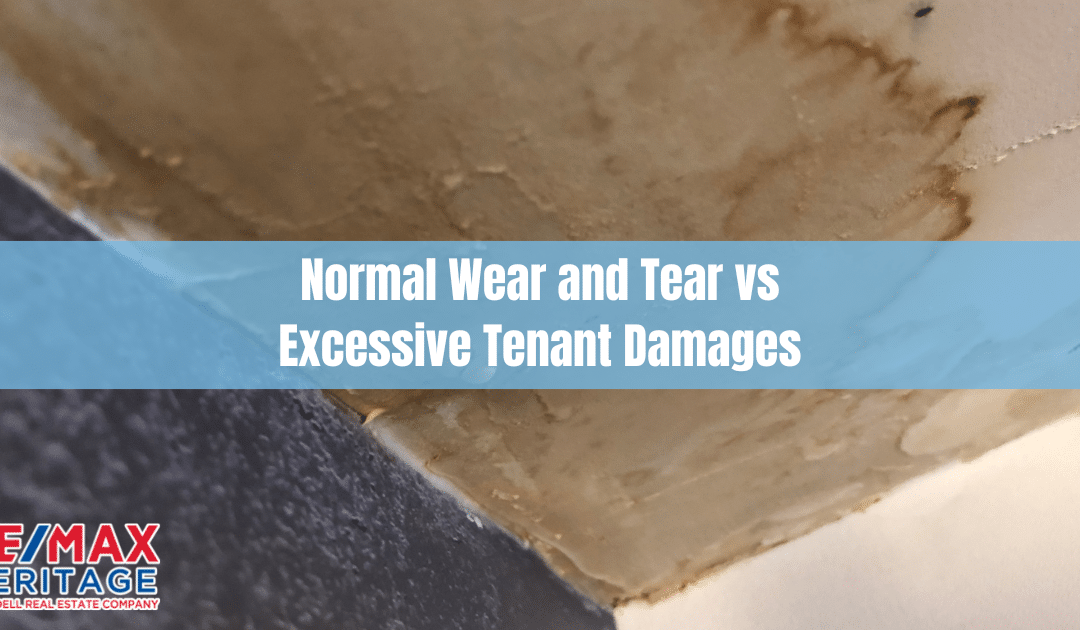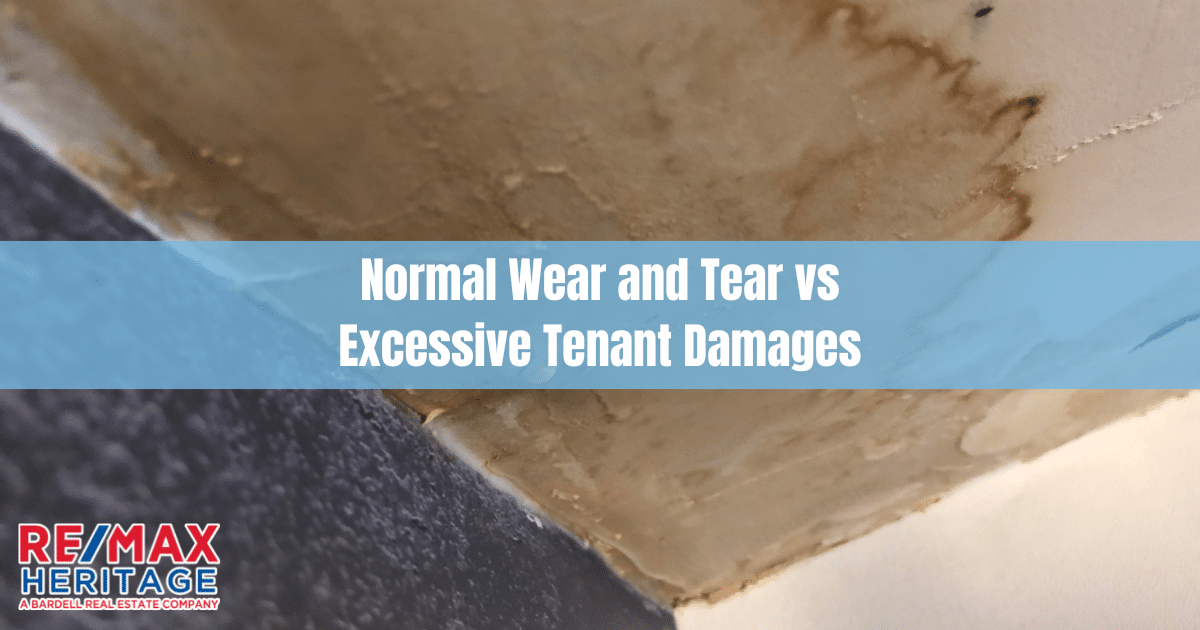Normal Wear and Tear vs Excessive Tenant Damages
“Normal wear and tear” is one of those landlord-tenant law phrases that is subjectively difficult to define. It’s one of the leading contributors to security deposit disputes purely because of how vague it is.
Most states have individual versions of this law, each with different wording. This is an issue for you as a landlord. However, the general premise stays the same from state to state. Tenant damage is separated from normal wear and tear by implying the property damage resulted from negligence, abuse, or carelessness.
Of course, what constitutes these phrases differs from person to person. A person with severe OCD likely has a different definition of negligence and deterioration than someone else who is messy. The difference between normal wear and tear versus damages beyond normal wear is blurred at the best of times, and that presents a problem for your investment property.
With all of this being said, it is possible. So, how do you define normal wear and tear vs. excessive tenant damages for your rental real estate property?
Normal Wear and Tear vs. Tenant Damage
The Department of Housing and Urban Development has excellent documentation for defining what is and isn’t normal wear and tear.
Normal Wear & Tear Examples
According to the definitions laid out in the document, normal wear and tear constitute the following examples:
- Ripped or faded wallpaper.
- Peeling, faded, or cracked paint, including ceiling paint.
- Holes in the wall, including nail holes and pins.
- Cracks in the walls.
- Cabinet doors sticking.
- Hardwood floors in need of a coat of varnish.
- Loose grouting or tiles.
- Damaged window pane as a result of faulty foundations.
- Thin and faded carpet.
- Rusty shower rod.
- Lightly damaged enamel in the bathroom.
- Dirty or faded lamps and window shades.
- Clogged sinks resulting from old plumbing.
Excessive Wear & Tear Examples
If a tenant caused damage, the tenant must pay to replace or repair the damage as opposed to normal wear and tear. Examples of negligence on the tenant’s behalf include:
- Crayon markings, drawings, different paint colors, or wallpaper not approved by the landlord.
- Holes in the walls or plasterboard.
- Gouged or chipped hardwood flooring.
- Heavily damaged or ruined wallpaper.
- Broken windows.
- Doors ripped off of the hinges.
- Missing fixtures.
- Holes, stains, burns, or other damage to the carpets.
- Holes in the ceiling.
- Missing or cracked bathroom tiles.
- Clogged or damaged toilet from improper use.
- Damaged sink and bathtub, including chipped or broken enamel.
- Torn, stained, or missing lamps and window shades.
- Missing or bent shower rods.
Useful Life Expectancy
The documentation also lays out the useful life expectancy of various appliances proportional to the tenant’s age. Examples of this are:
- Hot water heaters – 10 years – All units.
- Air conditioning units – 10 years – All units.
- Refrigerators – 10 years – All units.
- Ranges – 20 years – All units.
- Plush carpeting – 5 years for family / 7 years for the elderly.
- Interior enamel painting – 5 years for family / 7 years for the elderly.
- Interior flat painting – 3 years for family / 5 years for the elderly.
- Tiles or linoleum – 5 years for family / 7 years for the elderly.
- Window shades, screens, and blinds – 3 years for family and the elderly.
Excessive Damage Repairs vs. Routine Maintenance
As the landlord, you have a responsibility to maintain the premises. This includes the standard turnover checklist between tenants. You usually cannot charge the tenant for this.
Cleaning
As the landlord, you must have the premises professionally cleaned when in-between tenants. Professional cleaning involves outsourcing the job to a certified cleaning company and cannot be done by yourself without the relevant qualifications. Outsourcing like this will ensure that the property is in pristine condition for the next tenant and allow you, as the landlord, to more clearly define normal wear and tear.
Being a landlord, you cannot bill your tenant for the regular cost of this cleaning. However, if the tenant never cleaned the unit during their time there, you may be charged extra by the cleaning company. This extra charge is a result of the tenant’s negligence and can be forwarded to them.
If you expect that your tenant will clean before they move out, be sure to include it on your lease agreements.
Carpet Cleaning
You do not need to outsource your carpet cleaning to a professional. You are free to do it yourself. You cannot charge your tenant for this kind of cleaning unless the carpet is excessively damaged. However, it would help if you suggested that your tenant cleans the carpet themselves before they move out. Keep in mind that if there is no significant damage to the carpet, they are not required to give it a deep clean.
If the carpet is damaged so severely that the tenant can’t clean it, there is something you can do. You can charge your tenant for the remaining life expectancy of the carpet. You cannot charge for a full replacement unless you can prove the carpet was brand new as carpets deteriorate naturally over time.
Carpet damage is a bit of a grey area when it comes to property deterioration. You will need to determine if it’s normal VS excessive wear and tear. Carpets are typically a very sore spot for a lot of landlords. It’s easy to damage one, and very hard to clean it. In the future, you might consider getting vinyl floors instead.
Paint
If you recently painted the unit, but the walls were filthy, you might be able to charge for the repaint as this doesn’t fall under regular wear and tear. This would include things like an excessive build-up of dirt, painting, and drawings on the wall.
However, if the tenant has been living in the unit for three or more years, you cannot charge them for a repaint as it is considered routine maintenance, as long-term deterioration would be regarded as wear and tear.
Light Bulbs
Every light bulb should be working when a tenant moves into the unit. As such, it is expected of them that every light is operational when they move out. This means that they bear the responsibility of changing any light bulbs that burn out.
The Importance of Security Deposits
It is vital that you, the landlord or property manager, collect a security deposit before the tenant moves into the rental unit. This acts as a form of insurance against any damages.
It provides you with the means to cover any tenant damage caused by negligence, and it serves as motivation for the tenant to look after the premises.
Typically, the security deposit amount is one month’s rent. This should be given to you in tandem with the first month’s rent in advance.
If there is no property damage when the tenant leaves, the landlord cannot keep the security deposit and is legally required to return it to them. Failure to do so entitles the tenant to seek legal action against you.
Lease Agreement Clauses
Having a comprehensive lease agreement is vital for landlords. Not just for when it comes to normal wear and tear vs. property damage, but in general.
These lease clauses will legally protect you against a variety of situations that may be individual to the tenant renting the property.
For example, you should include pet clauses if the tenant is bringing one to the rental property.
Without the proper clauses in place, it will be much harder to use the security deposit for damages.
As well as distinct clauses covering the individual tenant, there are a few that you need to make sure you’re on all of your lease agreements regardless of who is going to be renting the property:
- How the moving in and moving out inspections are going to work.
- If the tenant is required to clean the carpet or repaint when the tenant moves.
- Exactly what type of cleaning should be done by them before leaving.
- What is considered normal wear and tear, and what is considered damage.
- The procedures if the landlord discovers damage after the old tenant has moved out.
- How the security deposit is going to work.
Videos and Photographs
Taking videos and photos of rental properties is considered routine by landlords and renters alike. It prevents both parties from fraudulent claims and is a crucial piece of evidence in a legal dispute.
Landlords and tenants should both video and photograph the rental property before any renters moving in. This allows both parties to document any pre-existing damage, the condition of appliances, the condition of wood floors and carpet, the quality of the paint job, plumbing fixtures, and a variety of other features.
It is essential for both you and any renters to be thorough with this process. Furniture, walls, flooring, skirting board, light fixtures, and everything in between should be included in the recording.
Both should also take photos of the features included in the video to back up the evidence.
Similarly, the same process should be repeated by both parties when the renters leave the rental unit.
The tenant should take photos and a video themselves right before they finish moving out. This allows them to document the exact condition that they left the property in.
Once you inspect the property after the tenant has left, you should take photos and videos yourself. This way, there is clear documentation of the unit’s state at both ends of the tenant’s stay.
It allows officials to get a clear picture of the unit’s damage and deterioration, rather than just hearing testimony from the landlord or tenant.
A court judge will define normal wear and tear specifically for that situation, and that ruling is final unless you want to appeal it.
The Importance of Tenant Screening
Before landlords think about wear and tear, rent collection, security deposits, or anything in between, they need to screen their tenants.
This typically involves meeting the tenant for a tour of the property. It allows you, as a landlord, to get a feel for the other person’s personality. It’s an informal interview that gives you subtle clues as to whether or not you want that tenant living in your property.
Things like how they’re dressed and keep themselves, their manners, and how they conduct themselves can be significant indicators of whether they can be trusted with the property.
You should not let any personal bias or discrimination factor into your decision. You cannot base your decision to rent a property to a new tenant based on race, age, sexual orientation, gender, religion, ethnic origin, physical or mental disabilities, or family status. You also cannot refuse to rent a property based on the tenant having kids.
It’s not unusual for landlords to be wary of renting to the likes of young people, but don’t let that hesitation cloud the reading you get from the screening.
If you are found to be refusing rent based on one of the criteria above, then you might end up in legal trouble.
Screening should be done exclusively to determine how much wear and tear vs. damage a landlord needs to be concerned about.
The Last Note
As a last note on normal wear and tear vs. damage, try and keep a clear image in your head of the difference between the two.
While understanding what is considered normal versus damage is essential, you also need to recognize the impact of normal depreciation. The value and condition of appliances decrease over time. You cannot charge a tenant on grounds based on that.
Faded paint doesn’t warrant a replacement cost taken from the tenant’s security deposit.
It’s situations like this that put so much value into your lease clauses, though.
When you are drafting up your agreement, remember to be comprehensive but reasonable. If you want the tenant to repaint the walls, that’s acceptable, but don’t ask that automatically of tenants renting your unit for six months.
Understanding how to tell the difference between damages and wear and tear is just the tip of the iceberg for a real estate landlord.
We hope this guide will be useful for you going forward.
Source
Looking for rental services in Orlando – we can help.
We work with our Owners and tenants as individuals and never under estimate what it takes to keep you happy with your choice of Management Company.
By doing our due diligence with our clients, tenants, and vendors we create a service that exceeds expectations and generates positive referrals. Click HERE to learn more and how one of our property management professionals can help you!













